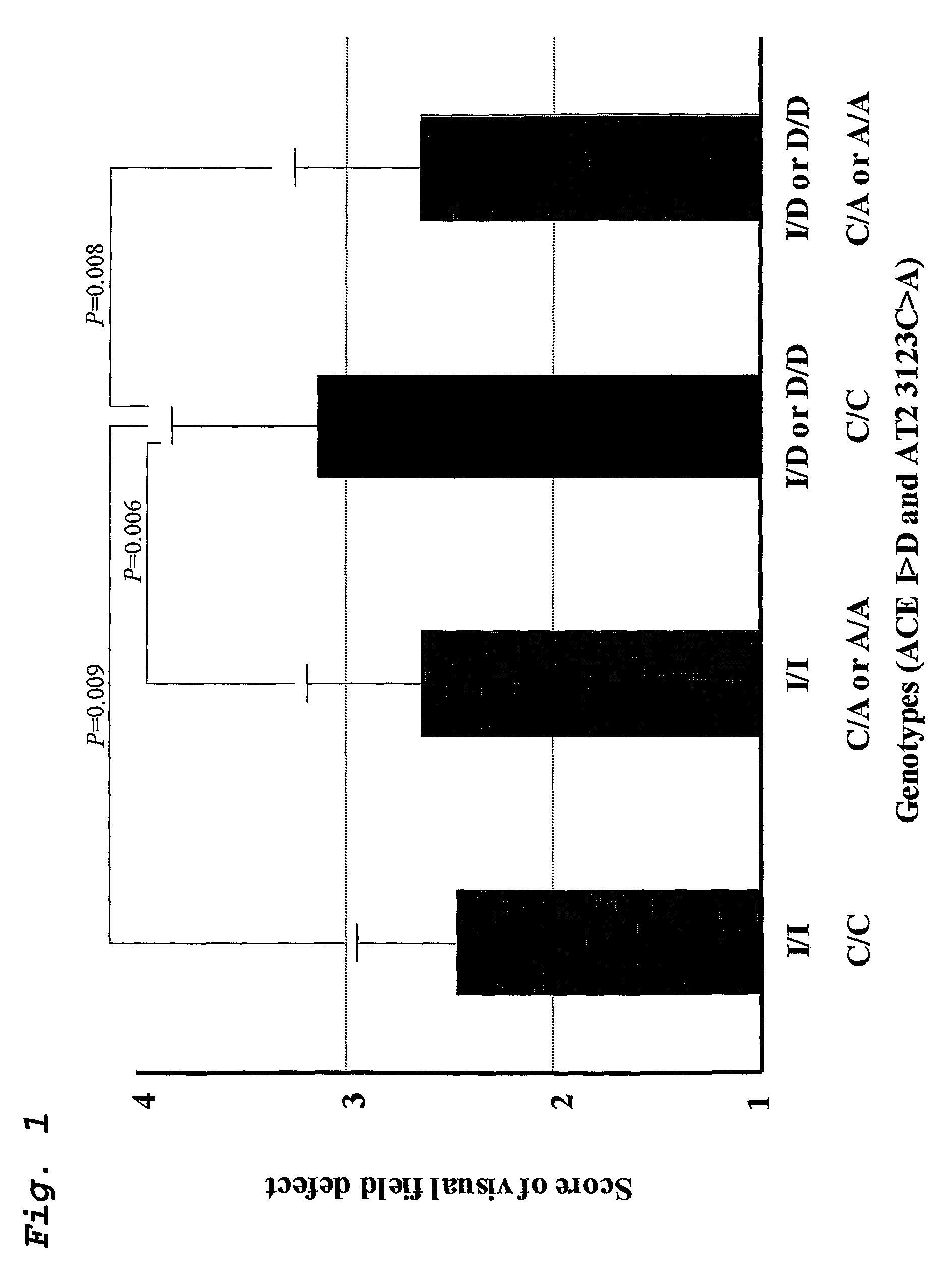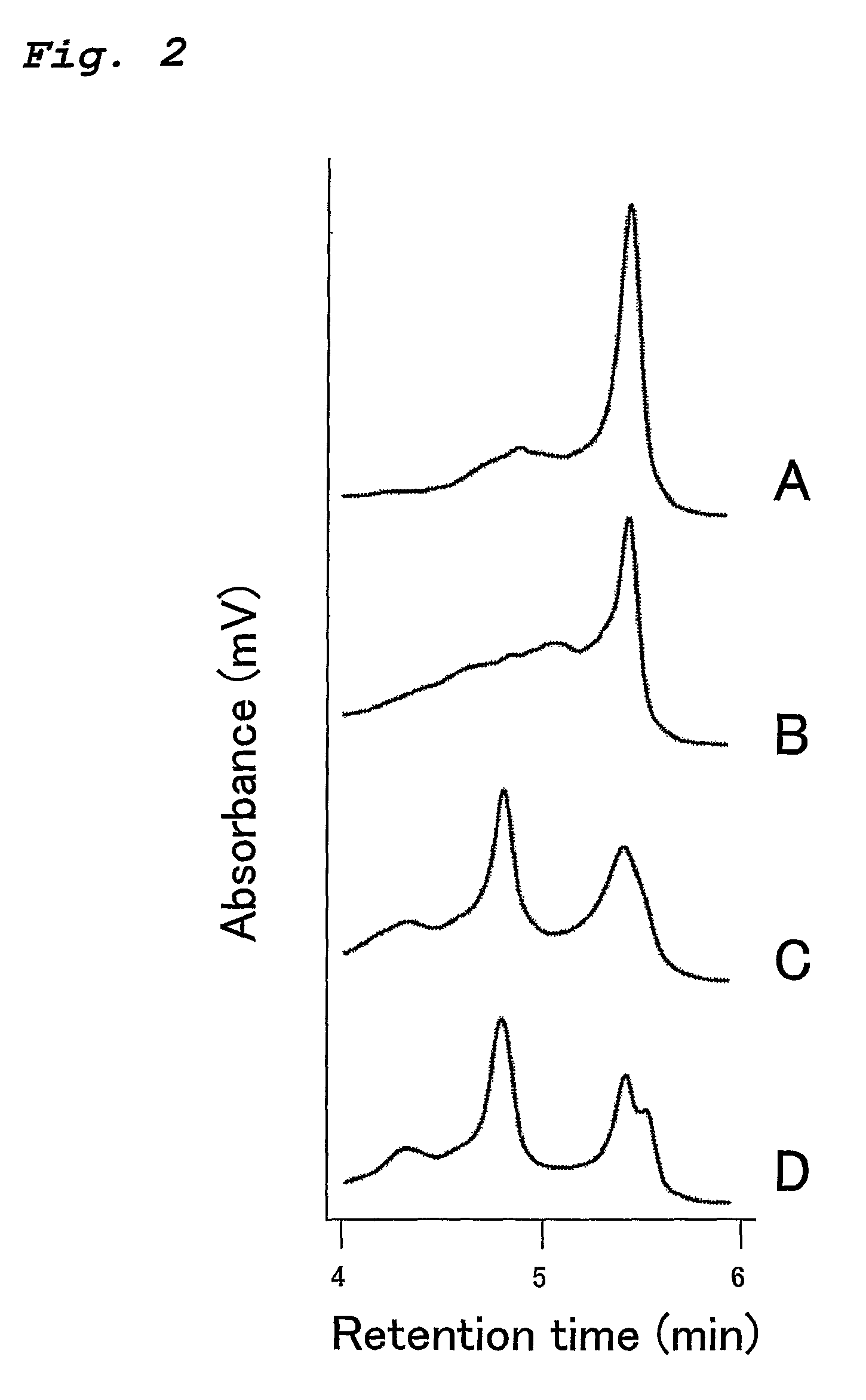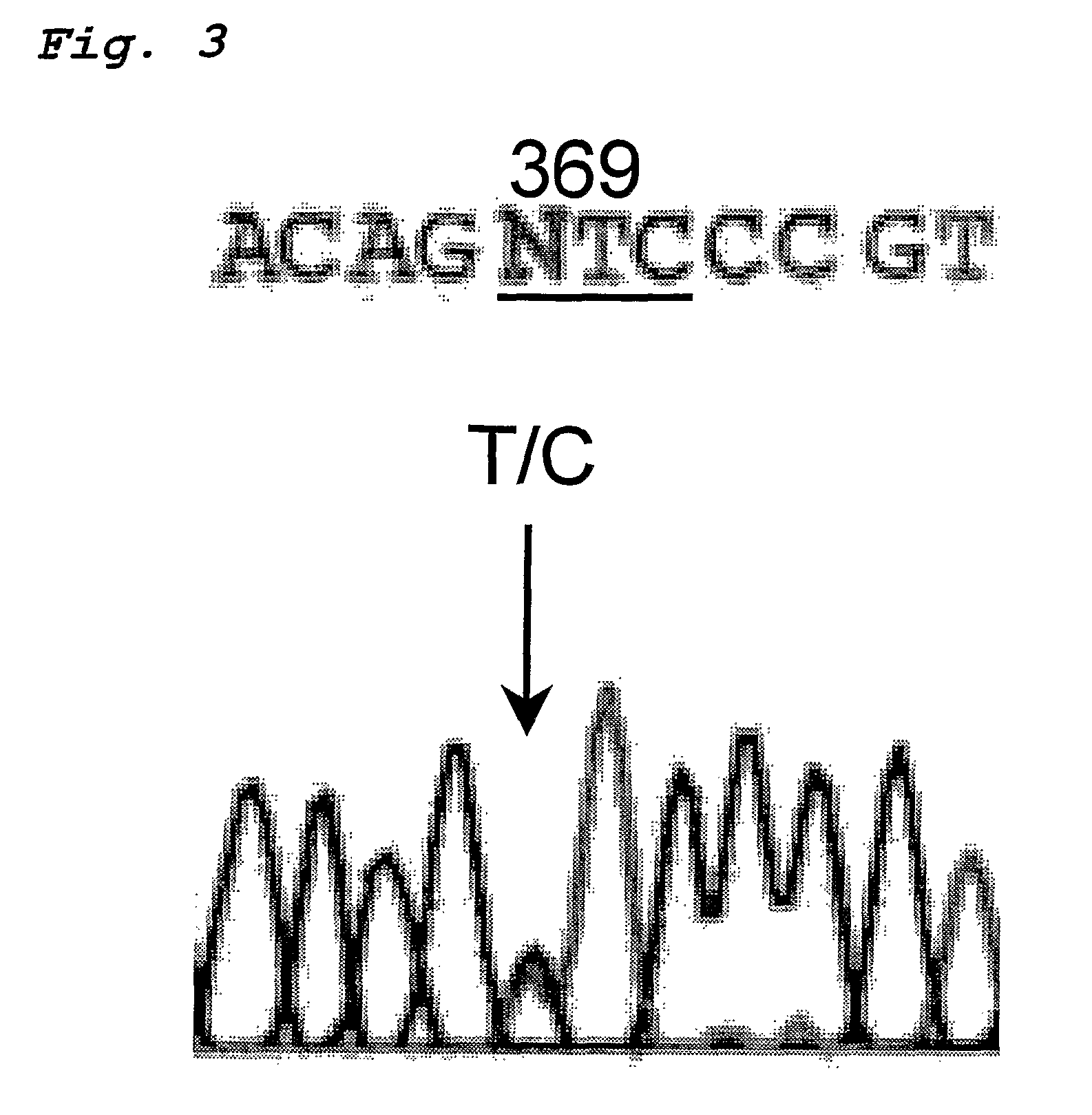Method for diagnosing or predicting susceptibility to optic neuropathy
a technology of optic nerve and susceptibility, applied in the field of genetic polymorphisms linked to optic neuropathy, can solve the problems of severe and permanent loss of vision, less than 0.1 visual acuity,
- Summary
- Abstract
- Description
- Claims
- Application Information
AI Technical Summary
Benefits of technology
Problems solved by technology
Method used
Image
Examples
example 1
Genetic Variants of TP53 and EPHX1 in Leber's Hereditary Optic Neuropathy and their Relationship to Age at Onset
Purpose: To determine whether genetic polymorphisms of the genes for oxidative stress and apoptosis cause the clinical variability in patients with Leber's hereditary optic neuropathy (LHON).
Materials and Methods
Patients
[0055]We studied 86 unrelated Japanese patients with LHON carrying the 11778 mutation with homoplasmy. Their mtDNA mutation was confirmed by polymerase chain reaction followed by a restriction-enzyme assay which revealed concordant gain of the MaeIII site (Mashima Y et. al., Curr Eye Res 1998; 17:403-408, the contents of the cited reference are herein incorporated by reference).
[0056]The mean age at the onset of visual loss in 86 LHON patients was 25.1±13.0 years with a range 3 to 65 years.
Genomic DNA Extraction and Genotyping
[0057]DNA was extracted from peripheral blood leukocytes by the SDS-proteinase K and phenol / chloroform extraction method. Polymorphis...
example 2
Mitochondrial DNA Mutations Related with Leber's Hereditary Optic Neuropathy in Primary Open-Angle Glaucoma and Normal-Tension Glaucoma
Materials and Methods
Patients
[0069]A total of 651 blood samples were collected at seven institutions in Japan. There were 201 POAG patients, 232 NTG patients, and 218 normal controls, and none of the subjects was related to others in this study.
[0070]The mean age at the time of examination was 61.2±16.0 years in POAG, 58.8±13.6 years in NTG, and 70.6±10.9 years in the control subjects. The mean age of the control subjects was significantly older than that of POAG patients (P<0.001) and the NTG patients (P<0.001). We purposely selected older control subjects to reduce the probability that a subset of them would eventually develop glaucoma. There were 112 (55.7%) men in the POAG group, 108 (46.6%) in the NTG group, and 89 (40.8%) in the control group.
[0071]Patients were considered to have POAG if they had a normal open-angle, a cup-disc ratio greater t...
example 3
Gene Polymorphisms of the Renin-Angiotensin Aldosterone System Associate with Risk for Developing Primary Open-Angle Glaucoma and Normal-Tension Glaucoma
Purpose: Multiple environmental and genetic factors may be involved in pathogenesis of glaucoma. To predict genetic risk of glaucoma, an association study in gene polymorphisms of the renin-angiotensin-aldosterone (R-A-A) system was performed.
Materials and Methods
Patients and Control Study Subjects
[0086]A total of 551 blood samples were collected at seven institutes in Japan. They were 162 POAG patients, 193 NTG patients, and 196 normal subjects, and none of the subjects was related to others in this study.
[0087]The average age at examination was 58.8±13.7 years in NTG, 62.0±15.4 years in POAG, and 71.2±10.4 years in normal subjects. The average age of the normal control subjects is significantly higher than NTG patients (p<0.001) or POAG patients (p<0.001), respectively. This could reduce the possibility that a subset will eventual...
PUM
| Property | Measurement | Unit |
|---|---|---|
| volume | aaaaa | aaaaa |
| temperature | aaaaa | aaaaa |
| time | aaaaa | aaaaa |
Abstract
Description
Claims
Application Information
 Login to View More
Login to View More - R&D
- Intellectual Property
- Life Sciences
- Materials
- Tech Scout
- Unparalleled Data Quality
- Higher Quality Content
- 60% Fewer Hallucinations
Browse by: Latest US Patents, China's latest patents, Technical Efficacy Thesaurus, Application Domain, Technology Topic, Popular Technical Reports.
© 2025 PatSnap. All rights reserved.Legal|Privacy policy|Modern Slavery Act Transparency Statement|Sitemap|About US| Contact US: help@patsnap.com



